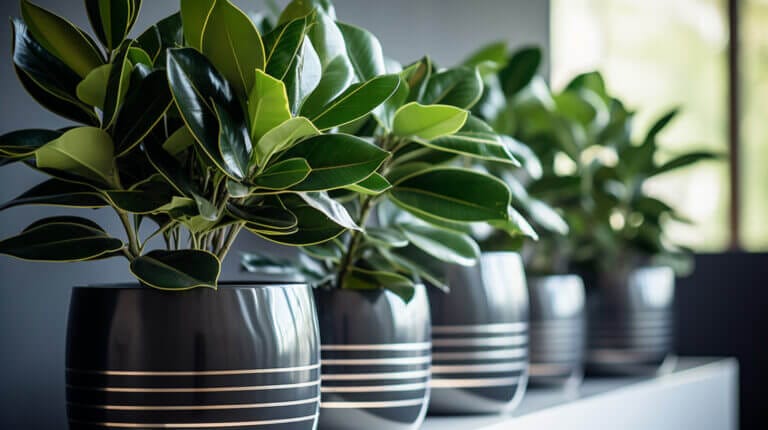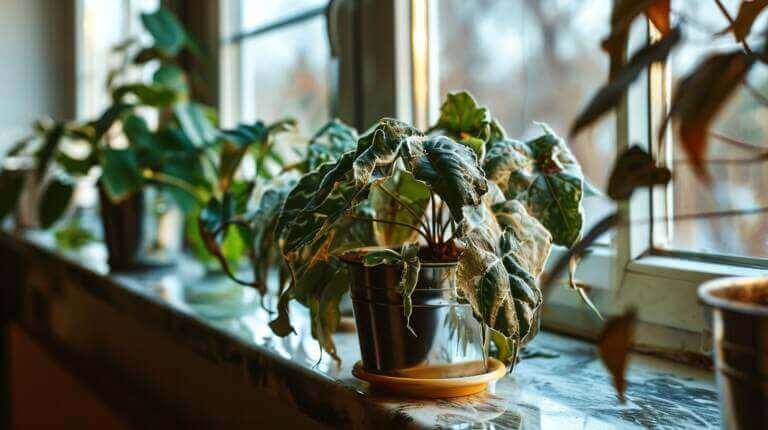Watermelon Peperomia Plant Care: How to Grow and Care for Peperomia Caperata Plants
Welcome to my guide on watermelon peperomia care! If you’re looking to add some beauty to your indoor garden, you’ll be delighted by the stunning foliage of the peperomia caperata, also known as watermelon peperomia. These gorgeous plants originate from South America and are known for their unique watermelon-patterned leaves. In this article, I’ll explain everything you need to know to successfully grow and care for these beautiful plants.
Key Takeaways:
- Watermelon peperomia, or Peperomia caperata, is a popular houseplant with stunning watermelon-patterned foliage.
- These tropical plants thrive in indoor environments and are relatively easy to care for.
- Provide bright to medium indirect light and avoid direct sunlight to prevent leaf burn.
- Watermelon peperomia prefers well-draining soil and should be watered when the top couple inches of soil dry out.
- Propagation can be done through division or leaf cuttings, and regular pruning helps maintain bushier growth.
- Watch out for common problems such as curling, drooping, or browning leaves, and adjust care accordingly to keep your plants healthy.
Light and Placement for Watermelon Peperomia
When it comes to caring for your watermelon peperomia, getting the right amount of light is crucial. These stunning plants thrive in bright to medium indirect light, mimicking the dappled sunlight they would receive in their natural tropical habitat. Placing your watermelon peperomia near a window that provides ample light is ideal, but be sure to avoid direct sunlight, as it can scorch the leaves.
If your indoor space doesn’t receive much natural light, don’t worry. Watermelon peperomia can adapt to lower light conditions, although the leaves may become smaller and the growth more leggy. In this case, you can provide supplemental artificial lighting, such as fluorescent or LED grow lights, to ensure your plant receives adequate light for optimal growth and vibrant foliage.
Remember, finding the right balance of light is essential for the health and beauty of your watermelon peperomia. Be mindful of the placement and adjust accordingly if you notice signs of light deficiency or excess, such as pale leaves or leaf burn.
Table: Light Requirements for Watermelon Peperomia
| Light Levels | Characteristics |
|---|---|
| Bright Indirect Light | Ideal for vibrant foliage and healthy growth |
| Medium Indirect Light | Acceptable for maintaining plant health and growth |
| Direct Sunlight | Avoid, as it can scorch the leaves |
| Low Light | Tolerated, but may result in smaller leaves and leggy growth |
Watering and Soil for Watermelon Peperomia
Proper watering and soil conditions are crucial for the health and well-being of your watermelon peperomia plants. By understanding their watering needs and providing the right soil environment, you can ensure that your plants thrive and display their stunning foliage.
When it comes to watering, it’s important to strike the right balance. Watermelon peperomia plants prefer the top couple inches of soil to dry out between waterings. Overwatering can lead to root rot and other problems, while underwatering can cause the plant to become dehydrated and wilt. Regularly check the moisture level of the soil by inserting your finger about an inch deep into the soil. If it feels dry, it’s time to water your plant.
Choosing the right soil is equally important. Watermelon peperomia thrives in well-draining soil that allows excess water to escape. A mixture of regular potting soil and perlite or sand can help create the ideal soil structure. This ensures that the roots have access to oxygen and prevents waterlogging, which can lead to root rot. It’s also important to provide a pot with drainage holes to allow excess water to escape.
| Watering Tips for Watermelon Peperomia | Soil Tips for Watermelon Peperomia |
|---|---|
|
|
Propagation and Maintenance of Watermelon Peperomia
Propagating watermelon peperomia is a simple and rewarding process that allows you to expand your collection of these beautiful plants. There are two main methods of propagation: division and leaf cuttings. Both techniques have their advantages, so you can choose the one that suits you best.
Propagation by Division
To propagate watermelon peperomia through division, start by gently removing the plant from its pot. Identify any offshoots or baby plants that have developed alongside the main plant. Carefully separate these offshoots, making sure each has its own root system. Plant the offshoots in separate pots filled with well-draining soil, and water them thoroughly.
Propagation by Leaf Cuttings
If you prefer to propagate using leaf cuttings, select a healthy leaf from the mother plant. Using a clean, sharp knife or scissors, cut the leaf at the base, ensuring you have a small section of the stem attached. Place the leaf cutting in a small pot filled with moist, well-draining soil. Mist the cutting and cover it with a plastic bag to create a greenhouse-like environment. Keep the soil consistently moist and provide indirect light. After a few weeks, roots will begin to form, and a new plantlet will emerge.
Once you have propagated your watermelon peperomia, it’s important to maintain their health and well-being. Regular maintenance includes light pruning to encourage bushier growth, which can be done by pinching off the tips of the plant. Additionally, keep an eye out for common pests, such as mealybugs and aphids, as these can negatively impact the plant’s health. Treat any pest infestations promptly to prevent further damage.
With proper propagation and maintenance, your watermelon peperomia plants will thrive and bring beauty to your indoor garden for years to come.
Common Problems and Troubleshooting for Watermelon Peperomia
When caring for watermelon peperomia, it’s important to be aware of the common problems that can arise and know how to troubleshoot them. By understanding these issues, you can ensure the health and vitality of your peperomia plants.
One common problem you may encounter is curling leaves. If you notice that the leaves are curling, it could be a sign that your plant is drying out too much or receiving too much direct sunlight. To remedy this, adjust your watering routine to ensure the soil remains consistently moist, but not waterlogged. Additionally, consider moving your plant to a spot with more indirect light.
Drooping leaves are another issue that may occur with watermelon peperomia. This is typically a sign that your plant needs more water. To address this, thoroughly water your peperomia when the top inch of soil feels dry. Be sure not to overwater, as this can lead to root rot. Finding the right balance of moisture is key for maintaining healthy foliage.
Browning leaves can be a cause for concern, but they can be attributed to several factors. Environmental stress, such as extreme temperature fluctuations or exposure to drafts, can cause browning. Lack of humidity or overwatering can also contribute to leaf browning. To prevent this issue, ensure your peperomia is placed in a stable environment with moderate humidity levels. It’s also important to avoid overwatering by allowing the soil to dry out slightly between waterings.
FAQ
How do I care for my peperomia plant?
Peperomia plant care involves providing the right amount of light and water. These plants prefer bright light but not direct sunlight. Overwatering can lead to root rot, so it’s important to let the potting mix dry out between waterings.
What type of pot is best for growing peperomia?
A pot with good drainage is essential for growing peperomia. This prevents water from sitting in the bottom of the pot, which can lead to root rot. A terracotta pot is a good option as it allows the soil to dry out more quickly.
What are some common peperomia varieties?
There are many varieties of peperomia, including the watermelon peperomia (peperomia argyreia), radiator plant (peperomia obtusifolia), and ripple peperomia (peperomia caperata). Each variety has its own unique leaf shape and coloring.
How do I prevent plant diseases in my peperomia?
Preventing plant diseases in peperomia involves proper care. This includes not overwatering the plant, providing the right amount of light, and regularly checking for signs of pests or disease.
What is peperomia caperata?
Peperomia caperata, also known as ripple peperomia, is a variety of peperomia that is known for its wrinkled green leaves. It’s an easy-to-grow indoor plant that adds a touch of green to any room.
How do I propagate peperomia plants?
Propagating peperomia plants can be done through leaf or stem cuttings. Simply cut a leaf or stem, let it dry for a day or two, then plant the cutting in a pot with well-draining soil. Keep the soil slightly moist and in a few weeks, you should see new growth.
What is the best way to care for a watermelon peperomia?
Watermelon peperomia care involves providing bright, indirect light and watering when the top inch of soil is dry. It’s also important to keep the plant in a warm environment as peperomia are tropical plants.
How do I care for peperomia obtusifolia?
Caring for peperomia obtusifolia, also known as the baby rubber plant, involves providing bright, indirect light and watering when the top inch of soil is dry. This plant can handle a bit more water than other peperomia varieties, but it’s still important to avoid overwatering.







